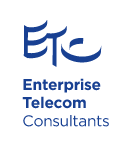15 Oct 6. Changes to Codes and Prefixes
6.1 Recasting of the MCC-MNC (Mobile Country Code – Mobile Network Code)
6.1.1 Measures
1.8.2018: to support the implementation of LTE technology by other types of networks than publicly available mobile networks – independent networks such as PPDR (Public Protection and Disaster Relief) or PMR (Professional Mobile Radio) or wireless networks open to the public providing fixed access to very high speed internet (very high speed broadband or radio THD networks) – the ARCEP #18-0881 decision reorganizes the structure of the MCC-MNC plan, also called IMSI block, as well as its conditions of use. These include:
- to allocate 2 dedicated 2-digit MNC codes to meet the needs of the State;
- allocate 3 2-digit MNC codes for testing purposes in a geographically restricted area of a few cells and for a limited time;
- to allocate a space of 100 3-digit MNC codes in order to meet the needs of operators wishing to provide a fixed broadband Internet access service;
- to allocate a space of 200 3-digit MNC codes in order to meet the needs of operators of independent networks being attributed frequencies and wishing to use the LTE technology; these codes may be allocated on an experimental basis under the conditions provided for in the IV section of Article L.44 of the CPCE, within the scope of a département.
The allocation of 3-digit MNC codes for fixed broadband Internet access networks and independent networks using LTE technology will help to meet the demand for MNC codes for these networks in the coming months. The Authority has taken note of the reservations expressed in this regard in the contributions to the public consultation and wishes to provide details. Understanding that it is not desirable to combine in the same network MNC codes from the same country code with 2 and 3 digits, the Authority specifies that operators with a 2-digit MNC code (excluding experimental assignments) may use this code, particularly in the event that they wish to operate a Super High Bandwidth Radio network, provide high-speed Internet access (4G) services on their network, or provide services that meet their business needs. Under these conditions, operators being attributed MNC 2-digit mobile do not need to implement a 3-digit MNC code if they do not request the assignment of additional MNCs.
In addition, the use of 3-digit MNC codes by THD Radio network operators and independent networks is not expected to have an impact on mobile operators with 2-digit MNC code as these networks very specific needs and that their users are not intended to interact with the networks of mobile operators and vice versa.
As regards test codes, this Decision specifies that they are freely usable by those who need them to conduct tests in a geographically restricted area of a few cells and for a limited period. They cannot be the subject of any individual allocation by the Authority and provide no protection against possible uses by other users in the same geographical area. In addition, they cannot be used to provide a commercial service to end-users or to operate an independent network in a sustainable manner.
6.1.2 Main implications
Legacy private radio systems (PMR) used totally separate protocols from those of the GSMA (2G, 3G). With 4G, this technological particularism ceases, which leads to multiply the number of networks, requiring a greater number of mobile network codes (MNC).
6.2 Extending the roles of portability prefixes
6.2.1 Measures
1.8.2018: the decision confirms the extension of the roles of portability prefixes to functions such as:
- Provision of numbers (routing to the depository’s switch)
- TDM residual call management (end-to-end TDM routing)
- Implement MVNO / FVNO agreements.
ARCEP calls for inter-operator coordination before defining a new use of prefixes.
6.2.2 Main implications
Considering the progressive differentiation of the functional and technical capacities attached to each fixed or mobile telephone number, and in the absence of a common eNum directory, French operators have used the technical means at their disposal; i.e. portability prefixes, to ensure differentiated routing of telephone numbers. To prevent these particular solutions to be managed by heterogeneous systems, it would be time to move from “one need, one set of prefixes, one number base” to an integrated management of all these particularities, around a common base managed by the authorities in charge of portability (APNF, EGP).
6.3 Redefining the role of R1R2 codes
6.3.1 Measures
1.8.2018: Allocation of R1R2 codes reserved for mobile operators
As of 1 August 2018, ARCEP reserves the allocation of R1R2 network identification codes exclusively to mobile operators for mobile services.
1.8.2018: The use of the code R1R2 = 99 for calls coming from abroad falls under the interconnection agreements
ARCEP allocates the code R1R2 = 99 to allow operators who wish to characterize the origin international calls. The use of this code being reserved for the very specific case of calls made from the international to French enhanced tariff numbers, the Authority considers that it is not relevant for all operators and that it should be covered by bilateral or multilateral interconnection agreements between the operators concerned.
6.3.2 Main implications
Given the heterogeneity of fixed telephony, ARCEP first decided to give up the general use of the R1R2 operator code in fixed telephony. Knowing that this code, not being generalized, had little interest, ARCEP took at the same time the decision to remove it from fixed telephony.
There remains the possibility, for the transit or destination operators who so wish, and who specify it in their interconnection offers, to mark calls originating from international interconnections to French premium-rate services. a fictitious code R1R2 = 99. This is the only R1R2 code which is not dialled by or at the request of the starting operator. The goal is to prevent revenue sharing on calls from the international to French premium rate services.

